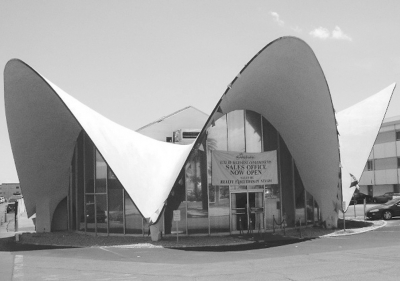Schwarz
View current page
...more recent posts
hawk mountain (out by my brothers house)
s9yard
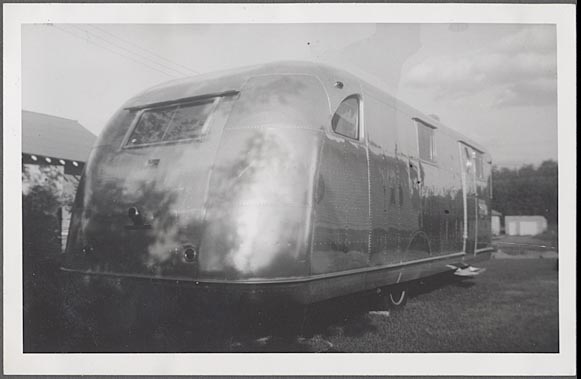
Leibniz, himself no stranger to strange ideas about language, is said to have recognized the transcendent quality of this work by coining the French verb goropizer ("goropize") to mean "invent absurd etymologies". So it's fitting that in honor of Dr. Goropius Becanus, an anonymous benefactor has endowed the prestigious Goropius Becanus Prize, awarded to people or organizations who have made outstanding contributions to linguistic misinformation.
sheeler in doylestown
BARTLETT COWDREY: When you came to New York, what were the art galleries? When, you went looking for paintings, what did you see, what was then contemporary?
CHARLES SHEELER: ...not only to see, but find one of them that would take their, foot out of the door and let me in.
BARTLETT COWDREY: I suppose Steiglitz...
CHARLES SHEELER: I never had anyone. Steiglitz was interested in a sort of semi-remote way, but I never was represented in any of his shows.
BARTLETT COWDREY: I mean in your spare time, if you wanted to see (American) paintings, what was new in your time?
CHARLES SHEELER: Well it seemed to me at that time, this couldn't be final necessarily, but living in Philadelphia, there would be super-colossal exhibitions, you know, where old masters and all the great names among collectors would have loaned pictures, and I would, if I could get the railroad fare together, and a dollar for overnight in a (New York) rooming house I would come over and spend a couple of days seeing...
BARTLETT COWDREY: What about Kraushaar and Knoedler?
CHARLES SHEELER: Of course I saw and was also a participant in the Armory Show.
BARTLETT COWDREY: 1913.
CHARLES SHEELER: And the First Independents.
BARTLETT COWDREY: 1917. Can you make a comparison between the Armory Show and the First Independents? The Armory was international, I realize, but...
CHARLES SHEELER: Yes, well it was; the eye-opener, the great eyeopener. The Independents just gave a chance to some of the local boys to...
BARTLETT COWDREY: But that was the wonderful thing.
CHARLES SHEELER: Yes, it was important, but the Armory Show gave the green light that it was all right to exhibit pictures like that.
New York’s urban architect recyclers, LOT-EK, have recently designed a library in Guadalajara made entirely of refurbished airplane fuselages. Apparently when airplanes are put to rest, most of their parts are easily recycled. However, according to Noticias Arquitectura, the fuselages are the only parts that are rarely reused, because “the cost of its demolition exceeds the profit of aluminum resale.” Because of this, there are a ton of discarded fuselages strewn all over deserts of the western states. Boeing 727 and 737 are the best-selling commercial planes and therefore the most common fuselage types in these graveyards. The fuselages are sold completely stripped, and at a ridicously cheap price - lending themselves to a great building material.mets cap tip to DF
its pretty bad form to hotlink directly to an mp3, so scroll baby scroll till you find this:
via clayton counts
Buchanan & Goodman - “The Flying Saucer (Parts 1 & 2)
In 1956, Dickie Goodman and Bill Buchanan pioneered a new kind of record called the “break-in” with their massive hit single “The Flying Saucer.” It utilized snippets of other performers’ work, including Chuck Berry, Don Cherry, Etta James, Smiley Lewis, Nappy Brown, Little Richard, and Fats Domino, and resultantly Goodman was taken to court on multiple counts of copyright infringement. In the end, Goodman’s song was declared a work of parody, and the matter was settled out of court. Although many people consider Goodman the father of sampling, musique concrete composers were the first to employ the idea. However, it is doubtful that the technique would’ve gained such widespread popularity, especially its use in radio bumpers, without Dickie Goodman’s contribution. Over the years, Dickie managed to record quite a few break-in records. One such record, a Jaws send-up entitled “Mr. Jaws,” would even grace the pop charts in 1975. Goodman took his own life in 1989, but his son Jon has continued to promote his father’s work, even releasing a break-in record of his own, “Return of the Flying Saucer.”
For the first time, scientists have produced a photovoltaic (PV) cell with a conversion efficiency of 40.7 percent, the U.S. Department of Energy (DOE) reported on December 7. The collaboration of DOE and Spectrolab, Inc. (a subsidiary of Boeing) led to the achievement of a decades-long goal: to break the 40-percent efficiency barrier on solar cell devices. “We are eager to see this accomplishment translate into the marketplace as soon as possible,” Alexander Karsner, assistant secretary for energy efficiency and renewable energy at DOE, said.via justin from the fablists
bootliquor was pre-installed with a link in the radio section of my brothers i.tunes program. it provided very good (real) country music for christmas in the country this year. its hosted by somafm online streaming radio. looks like they have some other interesting selections as well ie. lounge, assorted beats and spy music. spy music?
photo: cabin man jug
eichler house numbers
as advertised in modernism magazine
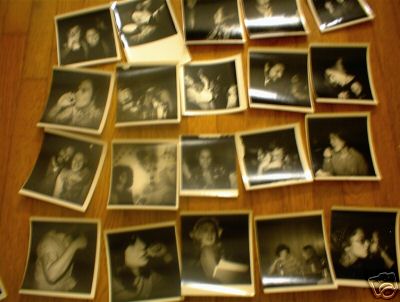
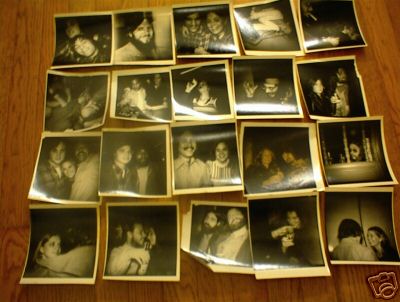
move over boogie bass / via r slab message bored
50 greatest cartoons via cityrag
from the bucks county modern desk: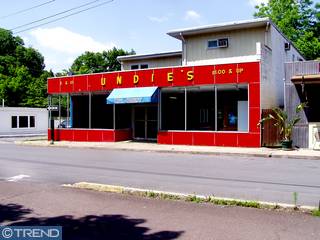
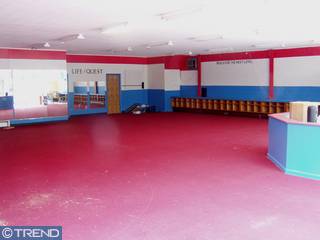
(L)UNDIES / riegelsville boro pa / 48 yo cinderblock hardware store (5 and 10) and apt over / bldg sf 3267 / lot 3920 sf / asking $329,900.00 / taxes pr anum $5,956.00 / view of canal, delaware river and bridge to nj / would make nice artists studio, restaurant, furniture store, etc... (needs interior paint!)
fmu top 10 2006 / rip the message board
via persona non grata im not lisa
blackberry product placement
LAS VEGAS -- New York City has Grand Central Terminal. Boston has Faneuil Hall. Chicago has the Carson Pirie Scott & Co. building. San Francisco has Coit Tower. Las Vegas has . . . the La Concha Motel lobby.
Among such august architectural icons, kitschy La Concha --which most closely resembles a fly-in hamburger stand used by the Jetsons--might seem like a questionable candidate for historic preservation.
But, by year's end, if all goes according to plan, the airy, concrete and glass 1961-vintage lobby, with its three signature 28-foot parabolic arches, will be preserved for posterity at a cost of about $1 million. Preservationists cobbled together the money through state and local grants and donations.
Too high to fit under surrounding overpasses and too heavy to be lifted intact by helicopter, La Concha presented a logistical dilemma, said Suzanne Couture, a designer with Las Vegas-based Friedmutter Group, which is donating architectural services for the project.
California-based structural engineer Mel Green came up with the solution: cut and paste. Sliced into six pieces, crated and trucked about 2 miles to the other end of the Las Vegas Strip, the reassembled 1,000-square-foot lobby, with a 1,500-square-foot addition, will become the centerpiece of a new park and visitor center for the non-profit Neon Museum. The museum, which spearheaded the La Concha effort, has preserved many of Las Vegas' famous neon signs in its 3-acre Boneyard site.
The Ledners’ entire house, in fact, appears to be one of these post-Katrina miracles. Designed and built by Mr. Ledner in the mid-1950s, the house, which has the jaunty silhouette of a World’s Fair pavilion, looks as fragile as a piece of cut crystal. It was flooded for weeks, and the elegant built-in furniture was left warped and moldy, the fine-grained Arkansas pine paneling was stained and a lifetime’s worth of possessions were ruined. Mr. Ledner considered tearing much of it down. But there it stands, denuded of most of its landscaping but largely rebuilt, the comfortable, unconventional homestead the Ledners have known for 50 years.
The house is one of 40 or so modern but eccentric New Orleans residences that Mr. Ledner has designed over six decades, and that have made him something of a local institution. (The most famous, built in 1962 for a pair of ardent smokers, has a procession of 1,200 gold glass ashtrays running just below its roofline; it now belongs to the mayor of New Orleans, C. Ray Nagin.)
An American flag plastered on the first steel column for the Freedom Tower at ground zero was removed Wednesday after the builders realized the stars and stripes were on the wrong side of the flag.
The Port Authority of New York and New Jersey removed the decal on the 31-foot column after The Associated Press and other media questioned the display of the flag, with the 50 stars on the right side instead of the left. Readers also called the AP after seeing the news agency's photograph of the column in Wednesday newspapers.
"It's painted backwards," said Bill Dolphin, 73, of Ocala, Fla. "When it's laying down, it's correct. When it gets lifted up into the air, the blue field should be on the other side."
Donovan Hohn tells the unusual true story of where 28,800 plastic animals (including rubber ducks) ended up after spilling from a freighter in the north Pacific in 1992.
The Orbison data indicate that flocks of toys completed four orbits of the Gyre. The first (2 years) may be faster than the latter three (4, 3, 3 years), because the toys developed holes but continued floating full of water buoyed by the low specific gravity of their plastic.
Historic MIBs — Messages In Bottles — provide confirmation of the Gyre’s orbital period as evident in the Orbison time series. In the 1950s, into the Gulf of Alaska Canadian oceanographers hurled 33,869 MIBs in 12-ounce brown beer bottles. Twelve drifted around the Gyre in 1.9-4.2 years, matching the interval between the Orbison peaks (2-4 years). The toys, plus MIBs, provide twenty estimates, indicating the mean time to orbit the Gyre equals 2.9 years. As to speed, the mean orbital period equates to 6.9 miles per day over the 6,800-mile course around the Gyre.
It was designed by Paul Rudolph, who was the dean of the Yale School of Architecture from 1958 to 1965 and a student of the Bauhaus founder Walter Gropius. Mr. Rudolph, who died in 1997, built homes and public and commercial buildings. Among them are his penthouse apartment on Beekman Place in Manhattan, Yale’s Art and Architecture Building and the Burroughs Wellcome headquarters in North Carolina.
In an interview on the Web site, WestportNow.com, Morley Boyd, the chairman of the Westport Historic District Commission, said: “If you’re looking for shock value, it’s hard to beat the loss of this house. There is not much to top it.”
But in a town where 92 demolition permits have been issued so far this year, a celebrated lineage alone is not enough to save the house. Because it is not at least 60 years old, the historic commission does not have jurisdiction.
“The house is not historically significant, and any view of how good or bad an architect Paul Rudolph was is purely subjective,” said David Waldman, who runs a commercial real estate company and whose wife is listed in town records as the buyer of the house.
Mr. Waldman said that his family wanted the house for the lot. “We have a family of three young children, and a modern structure wasn’t appealing to us,” he said.
The 4,200-square-foot house, which is to be razed this week, was commissioned by Louis Micheels, a former president of the Western New England Psychoanalytic Society, and his wife, Ina.
ambergris
via jaschw


